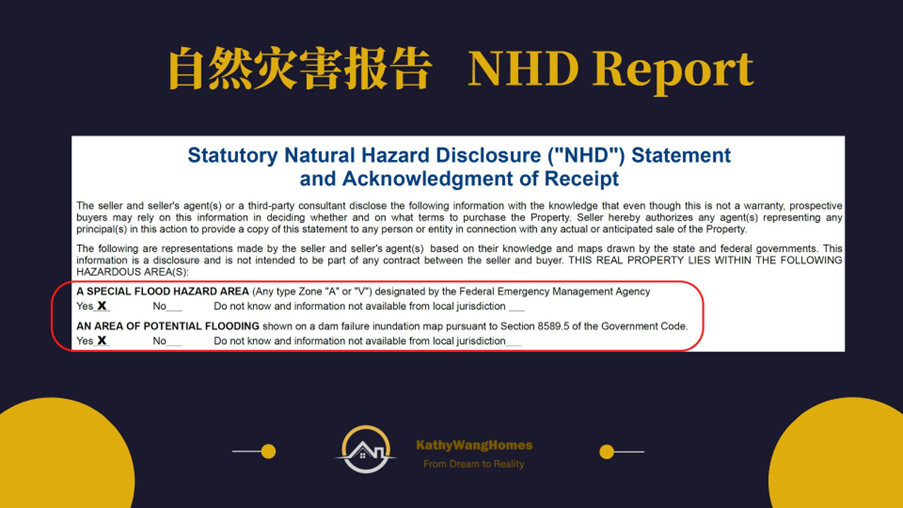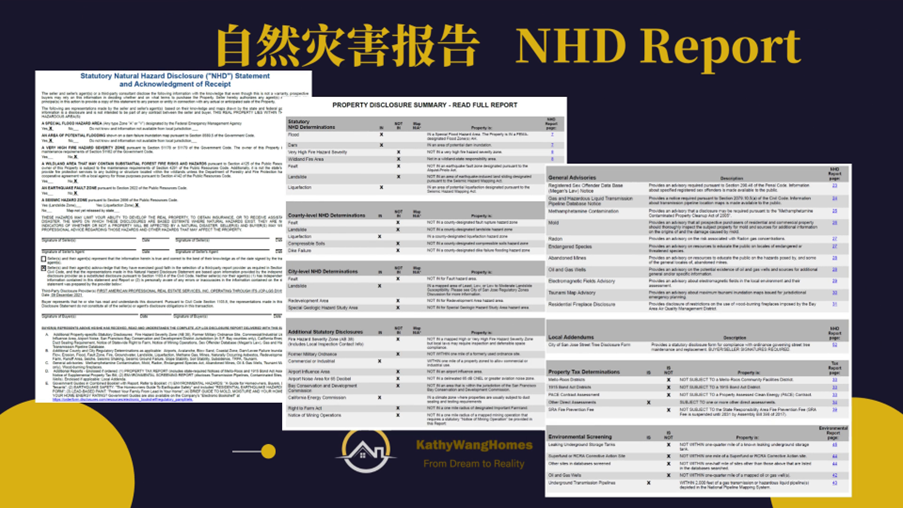This rainy season, the San Francisco Bay Area was hit by heavy rains, prompting many buyers to pay special attention to whether a house is located in a flood zone when viewing properties. In the Natural Hazard Disclosure report, there is information indicating whether a house is in a flood zone, highlighted by the two lines of text in the image. This article will explain what these two lines mean.

Firstly, the first line, "Special Flood Hazard Area," refers to areas mapped by the Federal Emergency Management Agency (FEMA) as being at risk of flooding. Zone A indicates inland flood zones, where there is a 1% annual chance of flooding and a 26% chance of flooding over a 30-year mortgage period. Zone V refers to coastal areas, with a 1% or higher annual chance of flooding, along with additional hazards from storm waves. These areas also have a 26% chance of flooding over a 30-year mortgage period. As we can see, Zone V is the most dangerous within the Special Flood Hazard Areas, typically including properties in the front row along the coastline. If a property is located in a Special Flood Hazard Area, many lenders will require the homeowner to purchase flood insurance.

The second line, "Areas of Potential Flooding," also known as dam inundation areas, is another type of flood hazard. California has over 1,400 dams, most of which are privately owned. Over time, factors such as aging infrastructure and sediment buildup in reservoirs increase the risk of dam failure. A dam failure could result in catastrophic flooding, with more devastating impact than ordinary floods. In February 2017, heavy rains damaged both the main and emergency spillways of the Oroville Dam in California, forcing the evacuation of over 180,000 residents downstream along the Feather River. The situation was extremely critical, as a dam failure would have sent a 10-meter high wall of water rushing downstream, inundating communities. Fortunately, a collapse did not occur. However, it highlights a key issue to pay attention to.

Previously, the keyword for California was "drought," but recent heavy rains have made it essential to prepare for flood prevention. It is recommended that, before purchasing a home, buyers carefully review the Natural Hazard Disclosure report with the help of their real estate agent to anticipate and mitigate potential risks.